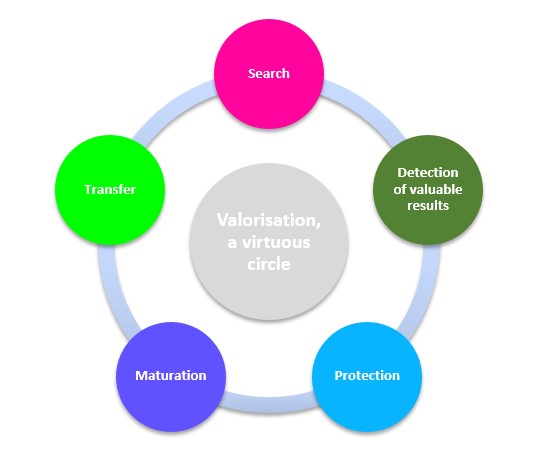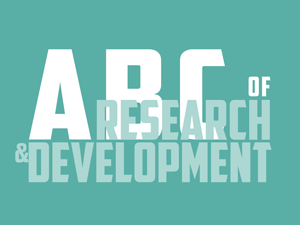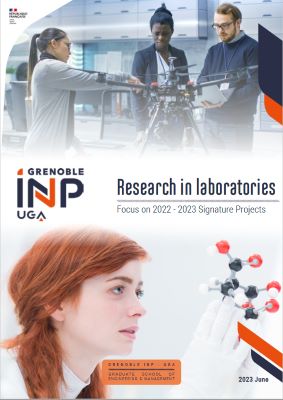article written by Isabelle Chéry
Valorising public research results is an activity that consists in increasing the value of innovative research results in order to transfer them to cultural, economic or societal actors.
There are two types of valorisation actions:
- Market-pull valorisation is carried out in partnership with companies. The research is focused on solving a specific problem proposed by the company. This collaborative research aims to improve knowledge in the field and, if possible, to lead to innovative results in the company’s field. Innovation is here co-constructed on the basis of previously identified market needs.
- “Techno-push” development is based on innovative research results obtained internally in laboratories. Here the invention is pushed towards the market. The objective is to find relevant applications for it. For this purpose, the valorisation is a transformation process of the innovative result, which consists in increasing its technical and socio-economic maturity in order to transfer it to existing companies or to exploit it within the creation framework of a spin-off. The aim of this process is to make the research result compatible with market expectations in order to reduce the risk factor inherent in industrialisation and thus facilitate the transfer. This technical and socio-economic maturation process can be carried out either internally or in partnership with a company.
It is essential to integrate the transfer of knowledge into research activities. In particular, before publishing your research results, do not hesitate to contact Wahiba Robert and Isabelle Chery, Grenoble INP's development officers, to study the relevance of intellectual property protection. Your results could be protected and thus lead to a transfer to:
- make the public benefit from your research results (new products, new services, etc.),
- contribute to economic development and create jobs,
- obtain additional resources to finance the research (in particular through partnership contracts with the beneficiary of the transfer),
- benefit from the positive effects on Grenoble INP's brand image for training and research (excellence and openness to the outside world),
- and finally, to control the appropriation of research results by third parties: valorisation is a virtuous circle!

Innovative results are results that are likely to be protected by industrial property assets (patents, plant variety certificates, designs and models, trademarks) or by intellectual property assets (software, databases) or to be kept secret (know-how such as, for example, management methods, process improvements, etc.), regardless of the scientific field. Indeed, in order to enhance the value of innovative results to the socio-economic and cultural world, it is necessary that these results reveal an economic value and are therefore materialized by an industrial or intellectual property asset or are kept secret. If the innovative result is published without prior protection, then it no longer has any economic value: anyone wishing to exploit it could not prevent a third party from using the same result for commercial purposes and would therefore have no competitive advantage.




